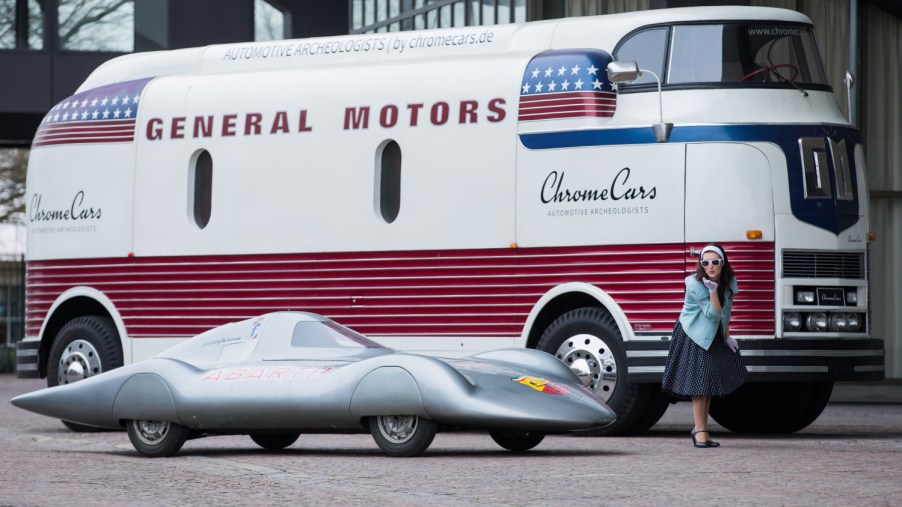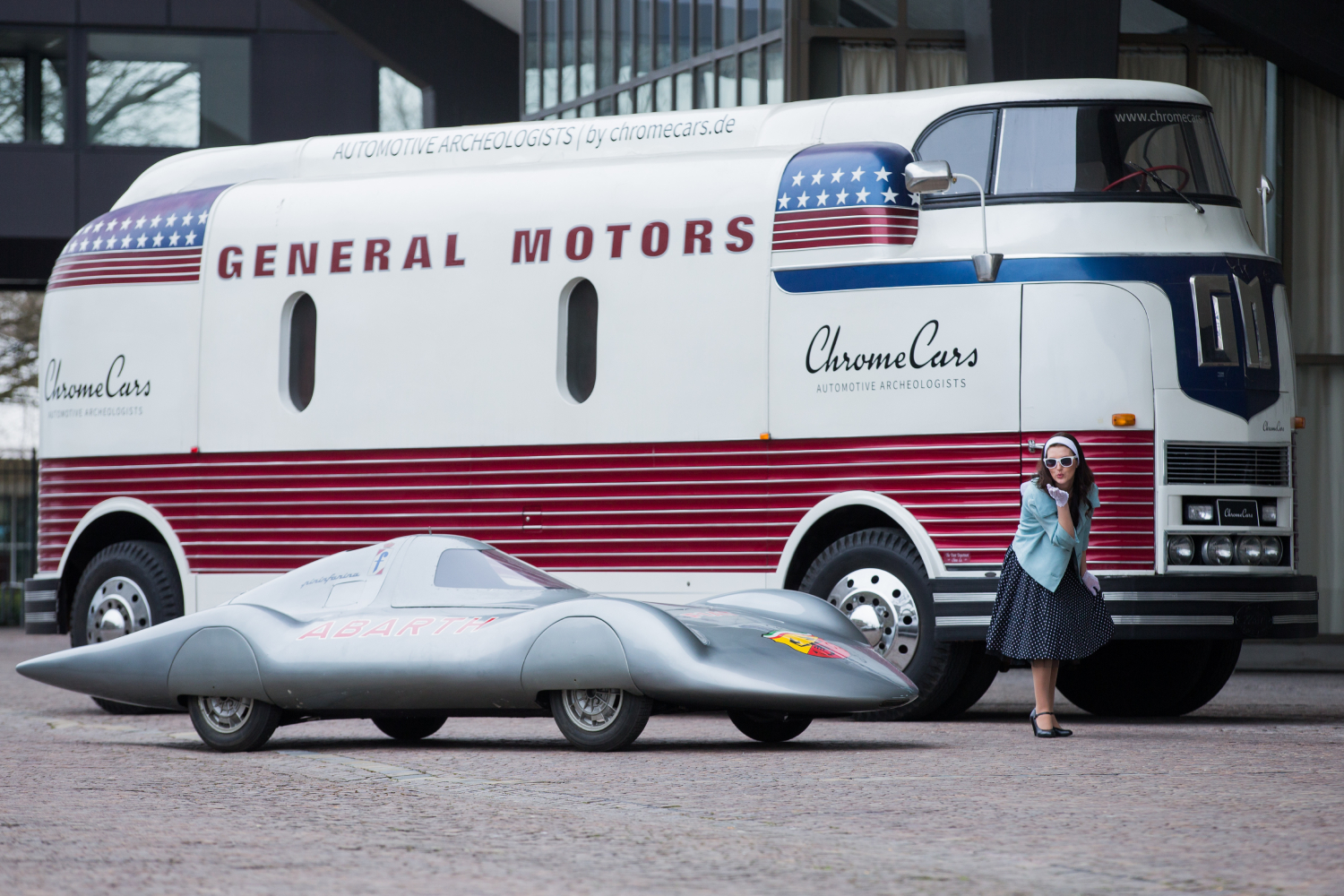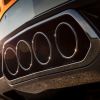
The GM Futurliner Used to Travel Around Showing off Microwaves and Other Futuristic Oddities
The General Motors Futurliner isn’t something you will see on the streets unless you live in Springfield, Massachusetts. The GM Futurliner is a pretty cool collector van that you could totally restore if you had $1 million to blow. Where did this 1940s futuristic van come from, and where did all of the other ones go?
From Streamliners to GM Futurliners in the Parade of Progress

In the 1940s, the GM Futurliner was part of a custom group of vehicles made to replace the Streamliners. The GM Futurliner Restoration Project says the fleet was made to participate in the Parade of Progress, an exhibit to promote future vehicles. The initial Streamliners participated in the parade in the late 1930s when the Futurliner took over from there. GM decided to remove the “E” from “future” to make the “Futurliner” name trademarkable.
The first Parade of Progress took place in Lakeland, FL, on Feb. 11, 1936. It visited 251 towns in the U.S., Canada, Mexico, and Cuba. Charles F. Kettering started the parade idea and was a big proponent of Ethyl gasoline, the diesel-electric locomotive, and more. When the Streamliner vans needed replacement, 12 Futurliner vans took over. However, the parade disbanded after Pearl Harbor, and most of the staff headed to war.
The Parade of Progress disbanded until 1953, and the Futurliner vans were stashed in a warehouse in Ohio until then. When the group got back together, it saw lackluster crowds due to the advent of television. The heydey of the Futurliner was behind us, but it still draws a crowd to this day. People often called these large vans red elephants due to the large size and color.
The GM Futurliner is always a hit with people on the streets
A recent article by The Drive dove further into the history of the GM Futurliner and how this one came to fruition. The author, Peter Holderith, happened upon one of these historic vans casually parked on the street in Massachusetts. The van happened to belong to Peter Pan Bus Lines, who happens to own two. The one hanging out on the road came equipped with a Supercharged 4-71 Detroit Diesel four-cylinder and an automatic transmission.
The vintage GM vans run 11 feet and six inches tall, seven feet and 10 inches wide, and are almost 33 feet long. Even though the Futurliner looks roomy, it only seats three people. People typically filled the back with some necessities to unload at the following location during the parade days. According to the GM Futurliner Restoration Project, this included a “microwave; Ping-Pong game in stereophonic sound and; sound traveling over a beam of light produced by a flashlight.”
John Cieplik, manager of Peter Pan Bus Lines and the caretaker for this particular vehicle, explained some of the nuances on the ride. He said that the Futurliner did not come with power steering but more of a “power-assist setup.” The massive vehicle has a dual-tire set up all the way around, making for eight tires total. “It’s like driving a tank,” Cieplik says.
Have you ever come across one of these futuristic GM vans?
Since many of these vehicles no longer exist, the price is pretty sky-high. Peter Pan is offering this particular one for sale for $1 million. An old CNN article calls the Futurliner a “GM’s $4M rolling propaganda machine.” Back in 2015, the 1950 GM Futurliner sold at Barrett-Jackson’s Scottsdale auction for $4 million. That makes the Futurliner one of the most expensive American vehicles ever sold. This one initially lived in Canada and was nicknamed FIDO the Futurliner. If you buy the one from Peter Pan Bus Lines, you also get the pieces of a decaying one in the backyard. While it doesn’t look like much, it probably has more parts than your local dealership.
With only 24 of these vans made over 50 years ago, this one is quite the sight to see. Have you ever come across one in the wild? According to the GM Futurliner Restoration Project, a few live in California and Maine to this day.



